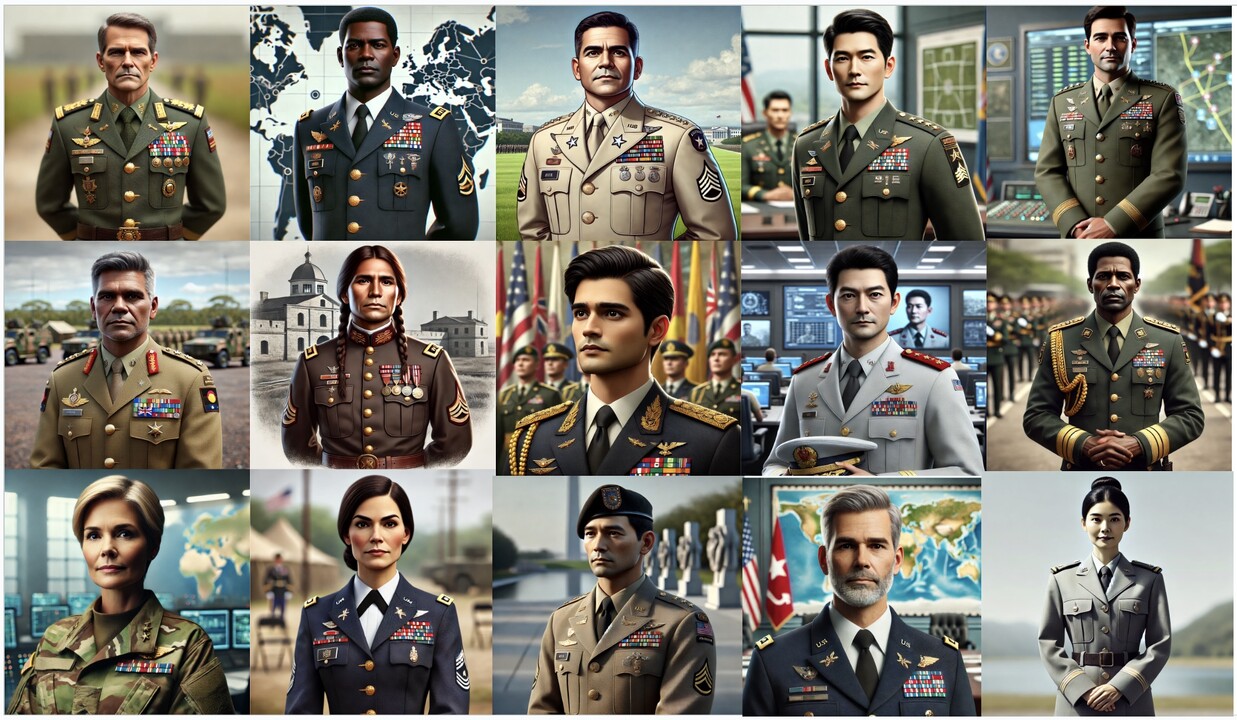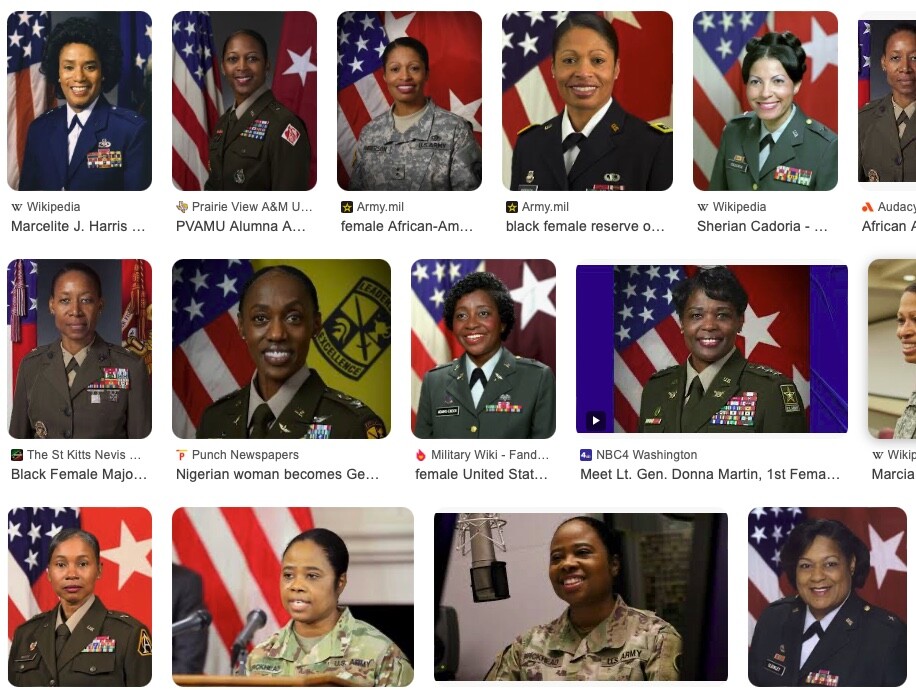This post is adapted from my upcoming book, "Chatbot Genius: The 10-Hour Guide to Transforming Your Work and Life - From Beginner to Pro: Unlock Your AI Mindset"
Have you ever wondered what an army general looks like? As we celebrate the appointment of the Canadian Armed Forces' newest Chief of Defence Staff, LGen Jennie Carignan ✅, Canada's first female chief of defence, I thought this would be an interesting experiment in exploring AI bias.
Admittedly, most people don't likely wonder what an army general looks like. It's not a question most of us ask, but when you do think of it, who do you picture? My experiment using ChatGPT 4 was on July 23, 2024, and highlights bias in advanced models.
The Experiment: Visualizing an "Army General"
I asked ChatGPT 4 to "create a picture of an army general" 25 times. The results were revealing:
Out of the first 15 images:
- First 10 images: All men
- First female general appeared: 11th attempt
- Total gender breakdown: 12 men, 3 women
- Ethnic representation: 8 European descent, 7 people of color
- National representation: 9 appeared to be American generals
- African American males: 2 generals
Most striking? Out of 25 attempts:
0 female African or African American generals were presented

The first 15 AI-generated images when asked to "create a picture of an army general"
What This Reveals About AI Bias
1. Underrepresentation
The 5:1 ratio of men to women presented by ChatGPT wasn't apparent in the first ten image generations.
2. Delayed Diversity
It took 11 attempts before a woman appeared, suggesting a strong initial bias towards male representation in the underlying data or model.
3. Intersectional Blindness
The complete absence of African or African American women generals points to a significant gap in the AI's training data.
4. Data Skew
The results suggest the training data is predominantly American and male-centric.
5. Post-hoc Corrections
The sporadic inclusion of women after the 10th attempt might indicate attempts to balance the output, rather than a truly representative dataset.
Female African American General Officers
While there are some duplicate images in this screen capture from Google Images, there was no shortage of images of female African American generals. I used this image to demonstrate they do exist.

(Screencap: Author under fair use for educational purposes)
The Root of the Problem
This bias likely stems from a lack of diversity in the teams developing these AI systems. Without diverse perspectives in the room, these blindspots can easily go unnoticed during development and testing phases. To be clear, there was no shortage of images of female general officers, and they were likely viewed in training by the model.
The inference is that proportionally, the ratio of pictures of men and women would have led the model to conclude they weren't representational enough to consider. Where bias is reinforced is when the model calculates the probability based on the representation and then determines it is so low that it factors the possibility out entirely.
Why This Matters
Bias in AI isn't just a technical issue—it's a reflection and potential amplifier of societal inequalities. From hiring decisions to content recommendations, biased AI can reinforce harmful stereotypes and perpetuate discrimination in subtle yet impactful ways.
Moving Forward
As we continue to develop and deploy AI systems, it's crucial that we:
- Diversify development teams
- Critically examine our training data for inherent bias and representation
- Implement rigorous testing for fairness and representation
- Remain vigilant and open to feedback from diverse user groups
By addressing these issues head-on, we can work towards creating AI systems that are not only powerful but also fair and inclusive.
Try This Experiment Yourself
If you have the time, I recommend you try this. Meta.ai has a free image generator so use that with this prompt - "create a picture of an army general." (I used a paid ChatGPT account, so results may vary between models.)
What are your thoughts on AI bias? Have you encountered similar issues in your work with AI systems?
Learn More About AI and Its Impact
This post is adapted from my upcoming book, "Chatbot Genius: The 10-Hour Guide to Transforming Your Work and Life". In this guide, I take you from beginner to pro, helping you unlock your AI mindset.
Explore My BooksTags: #AIbias #bias #DEI #ChatGPT4 #UnmaskingAI